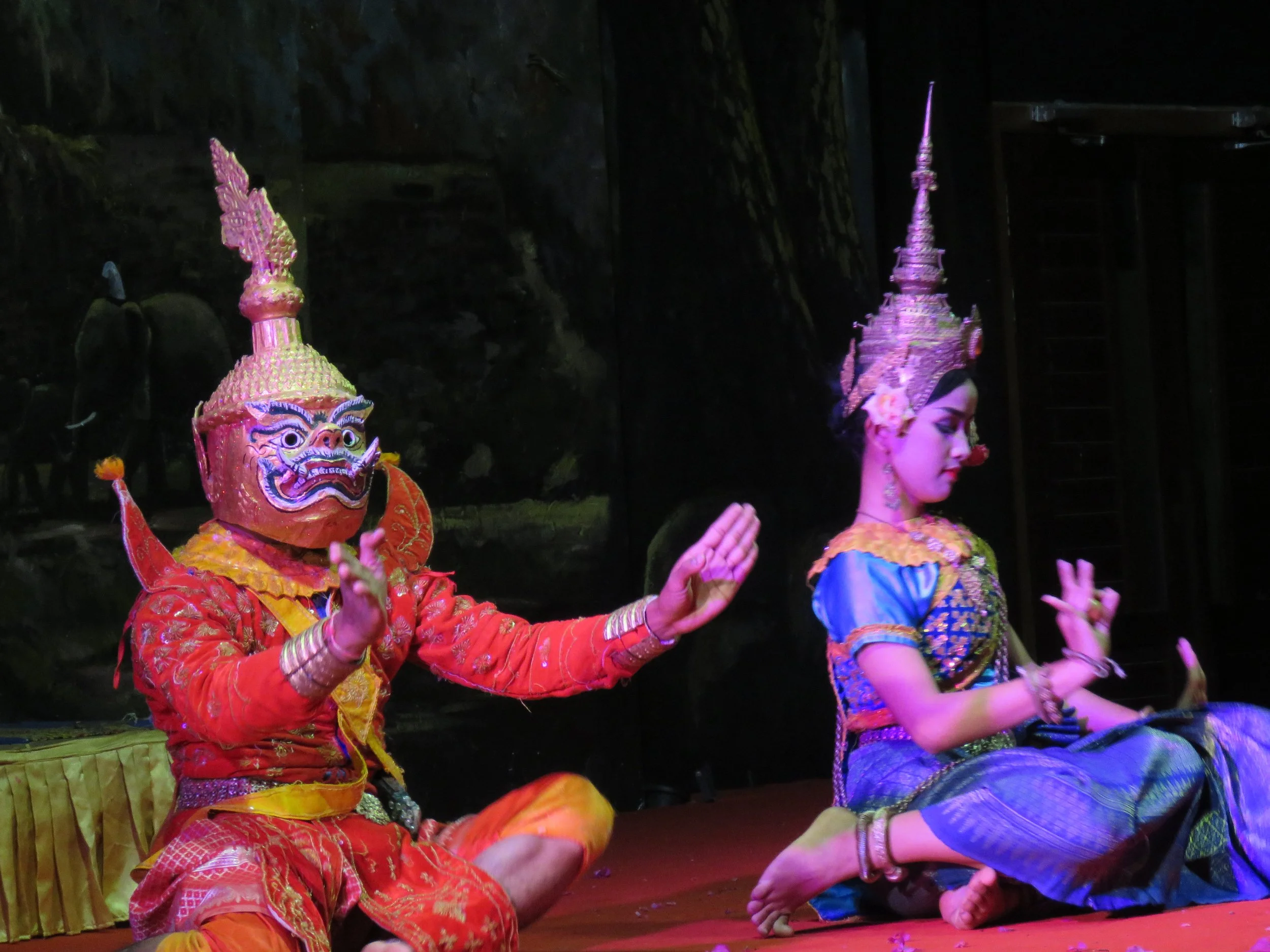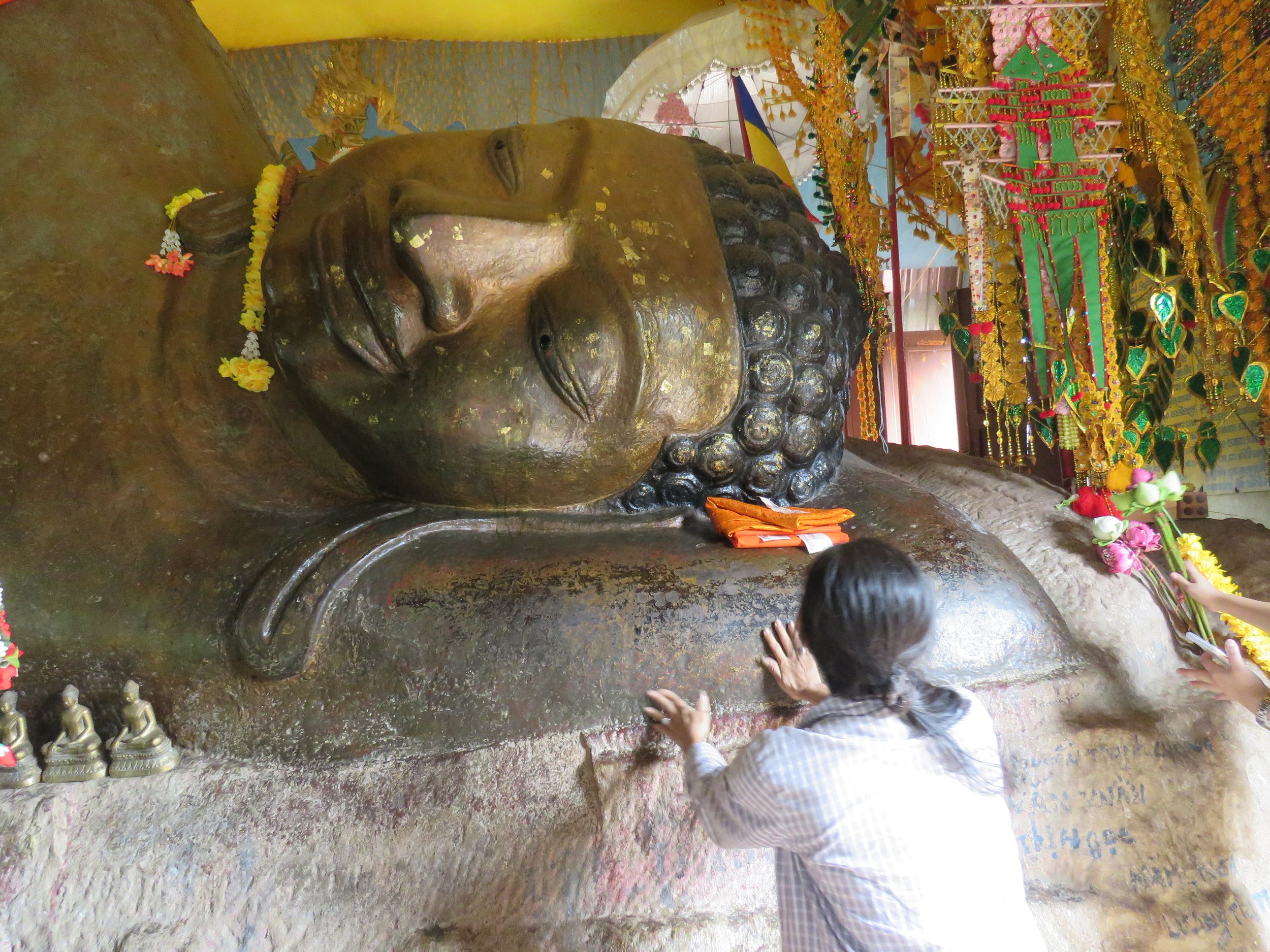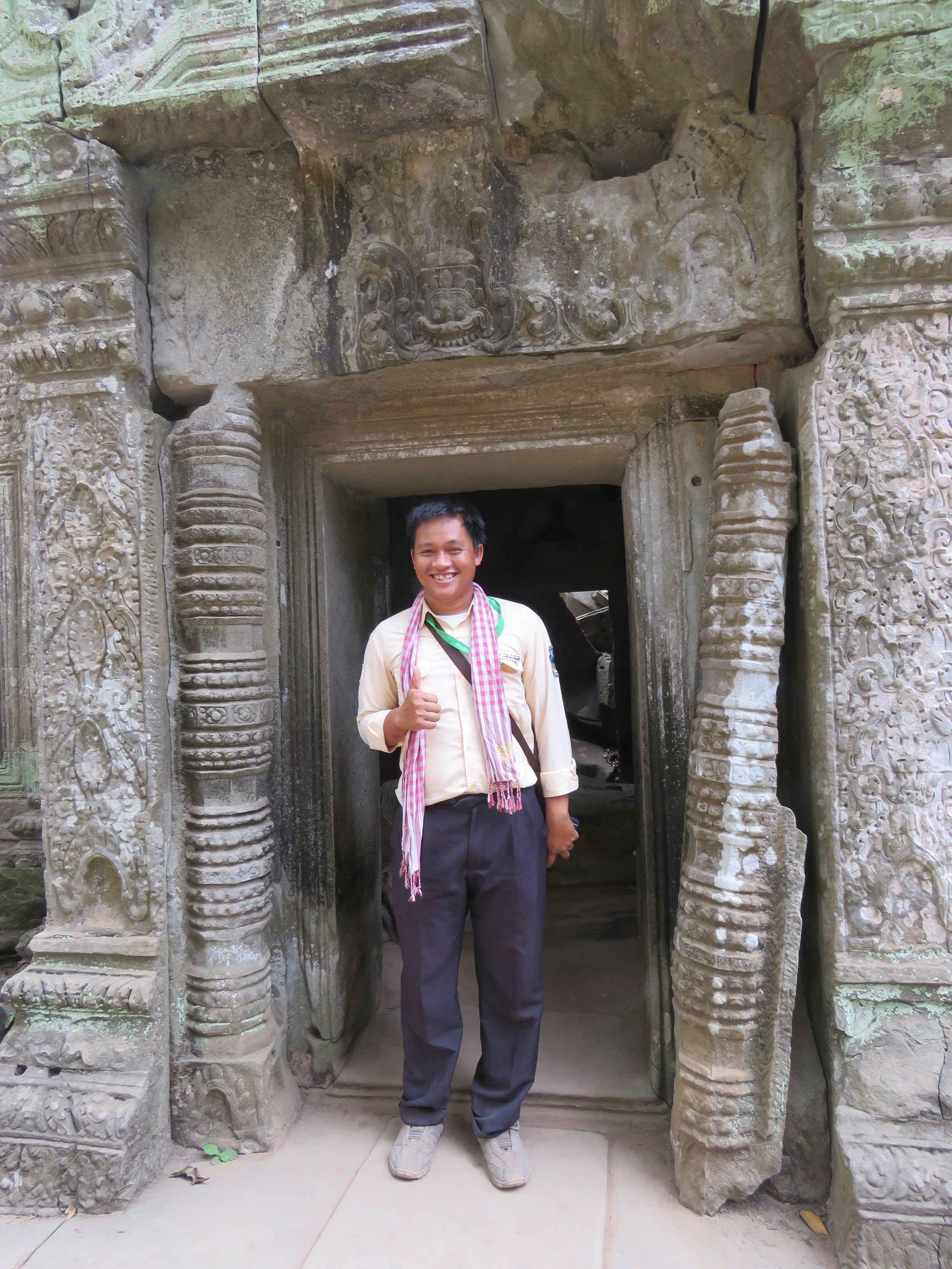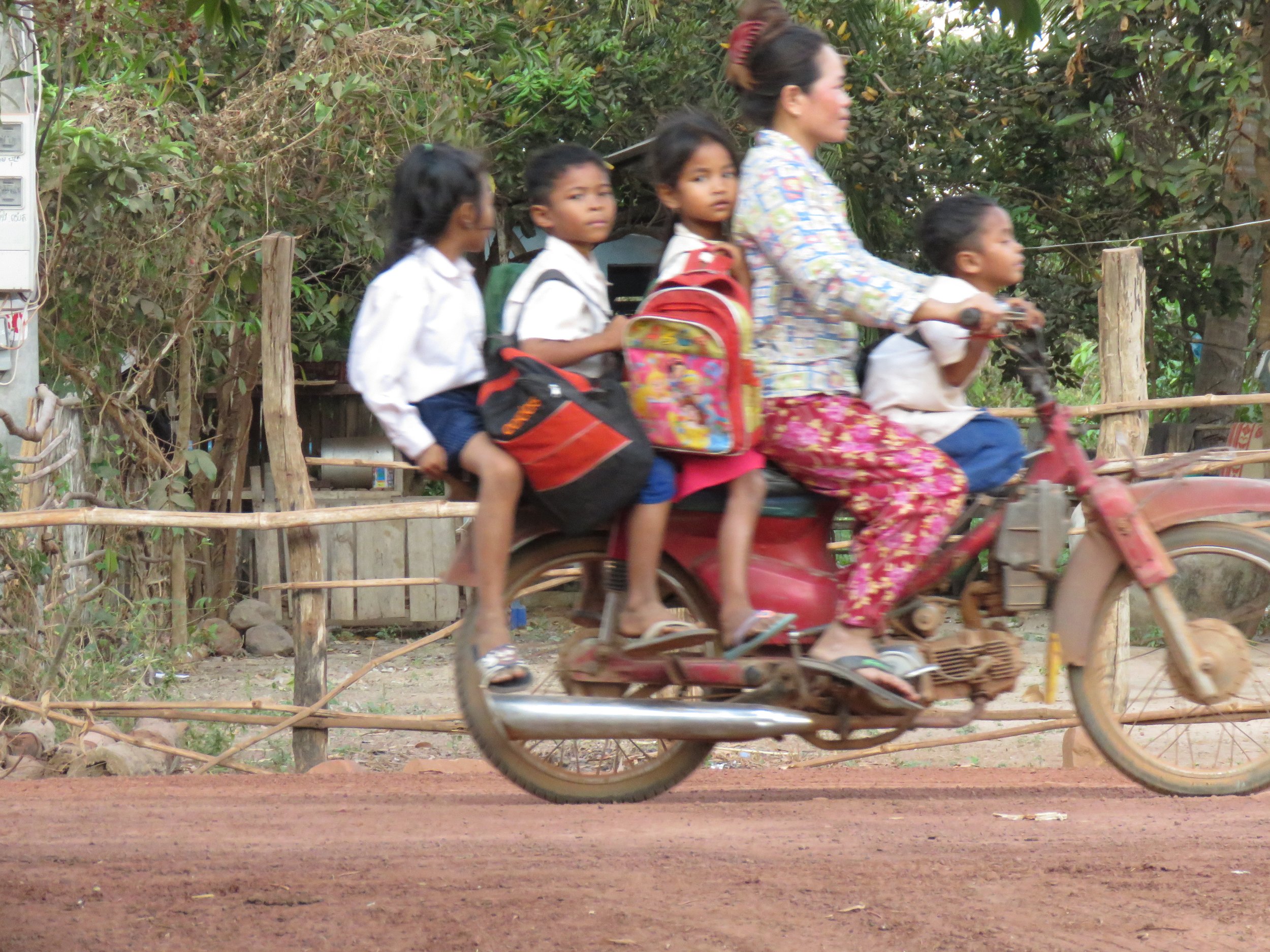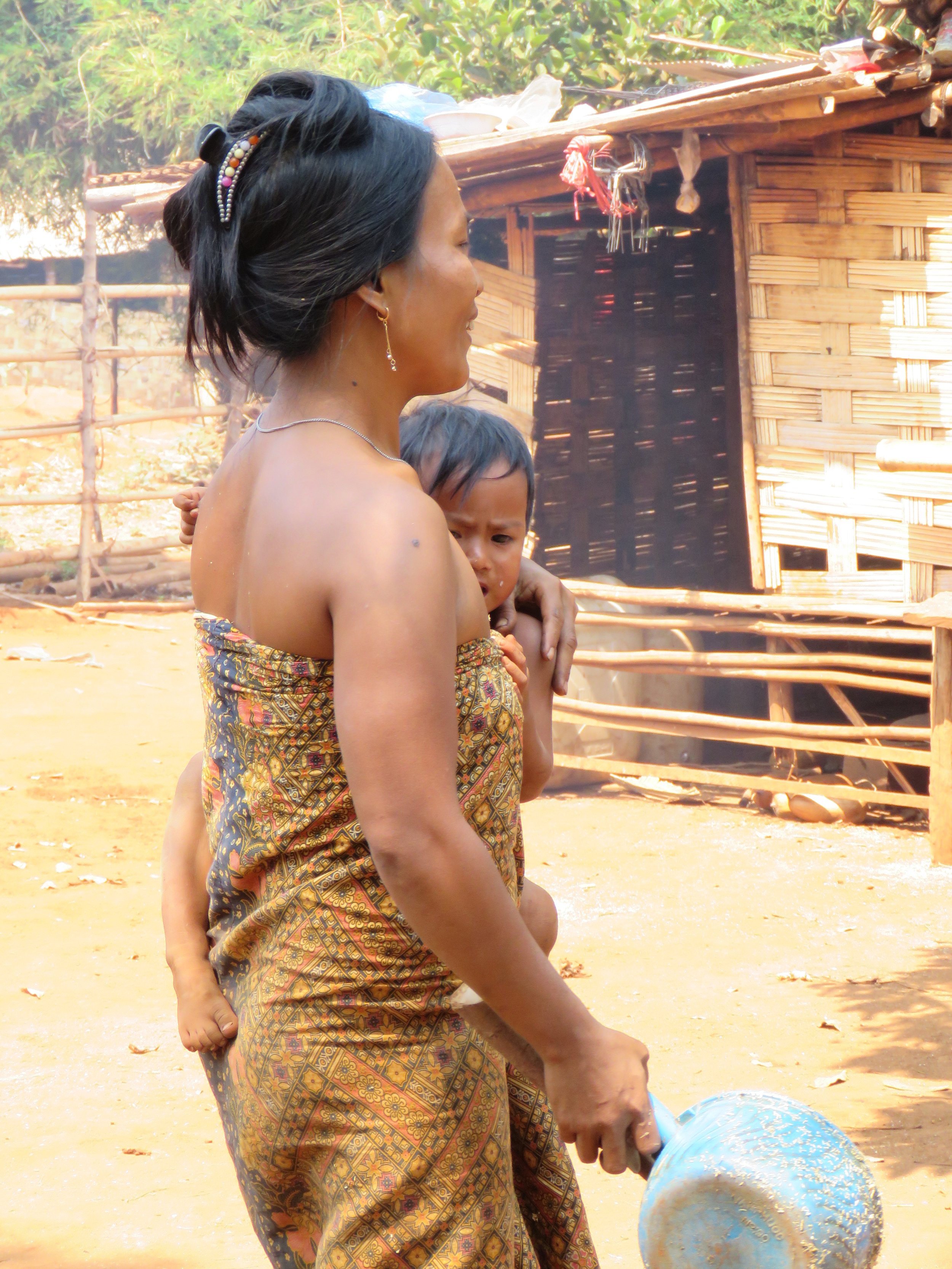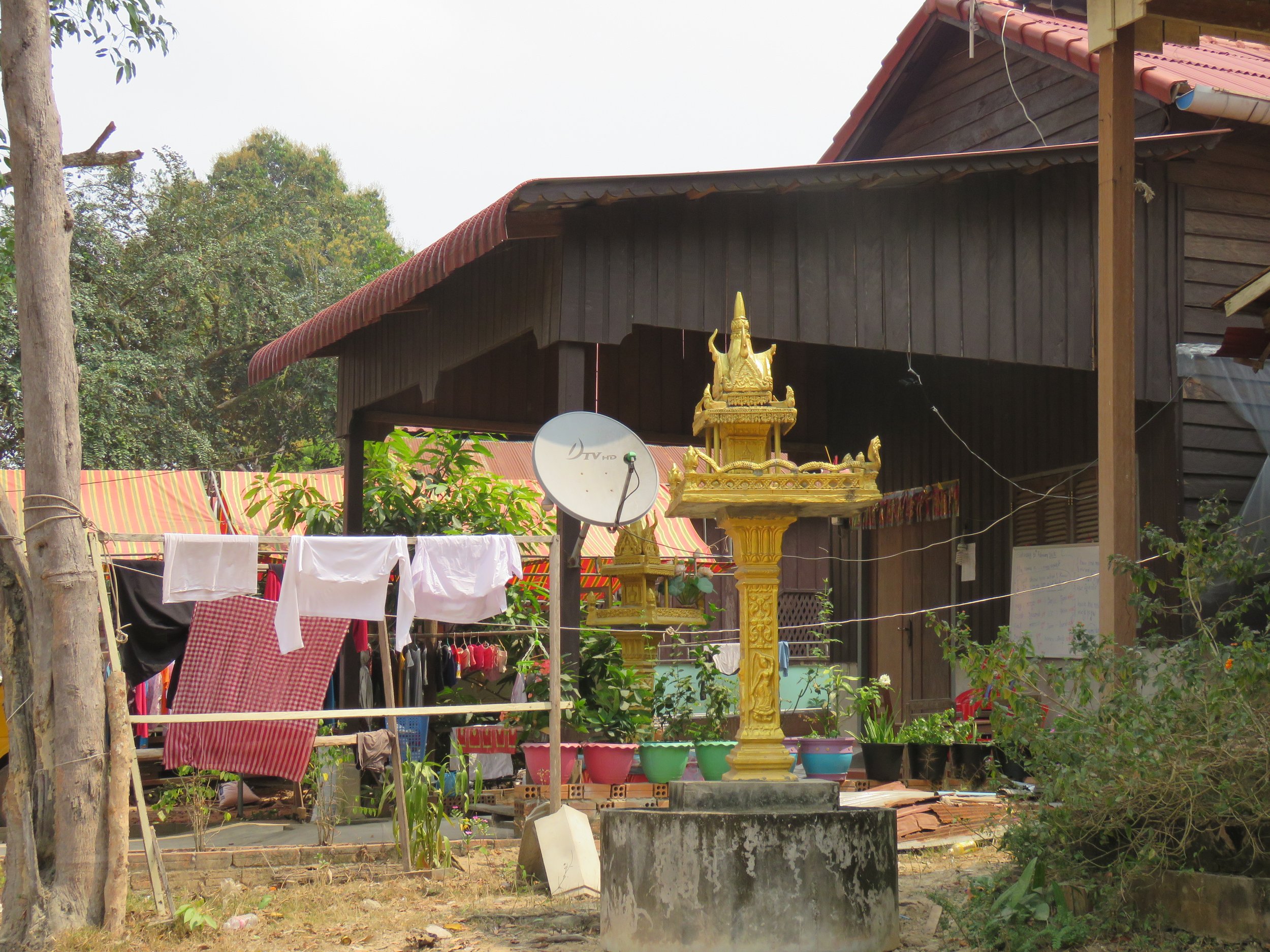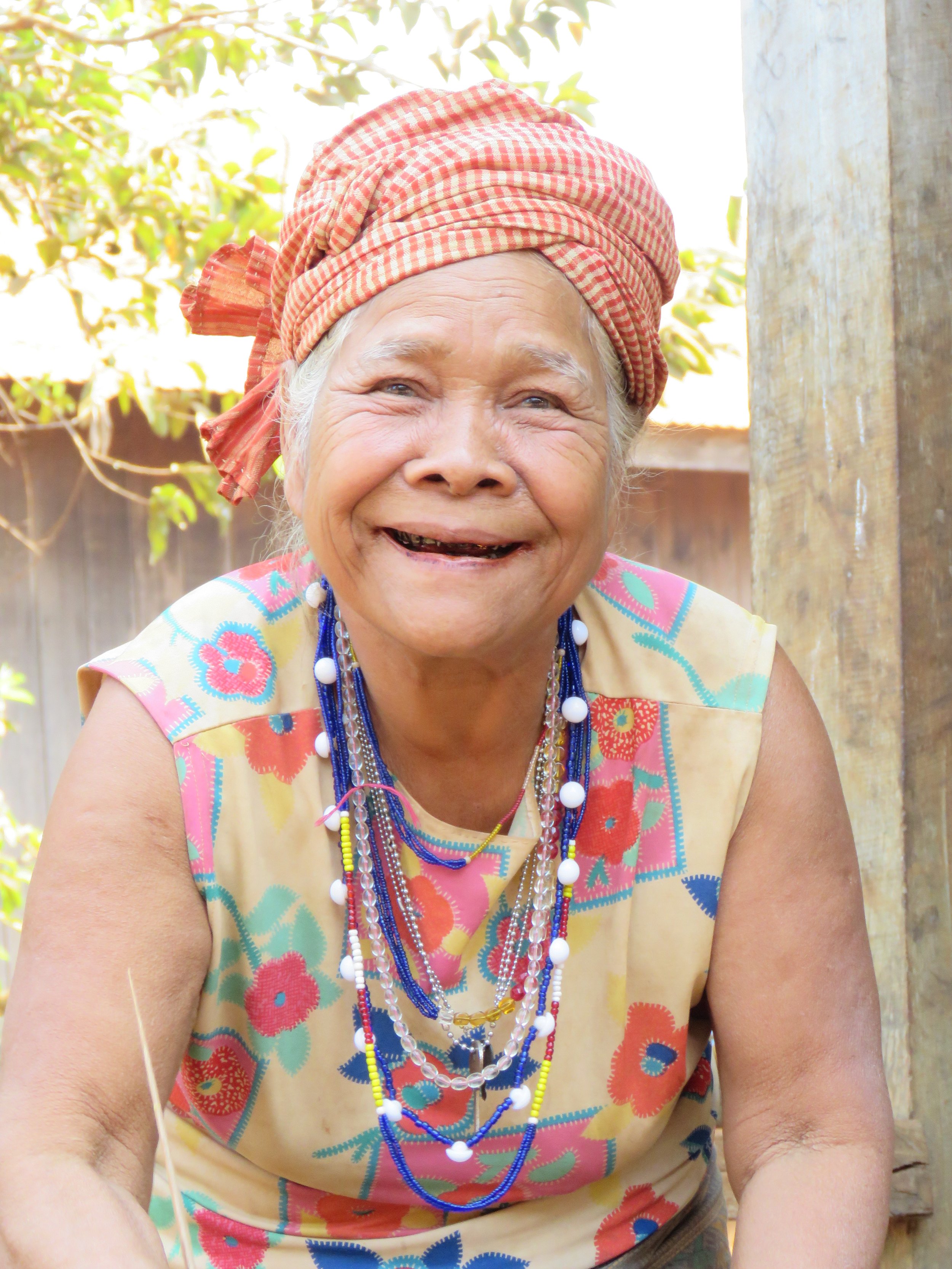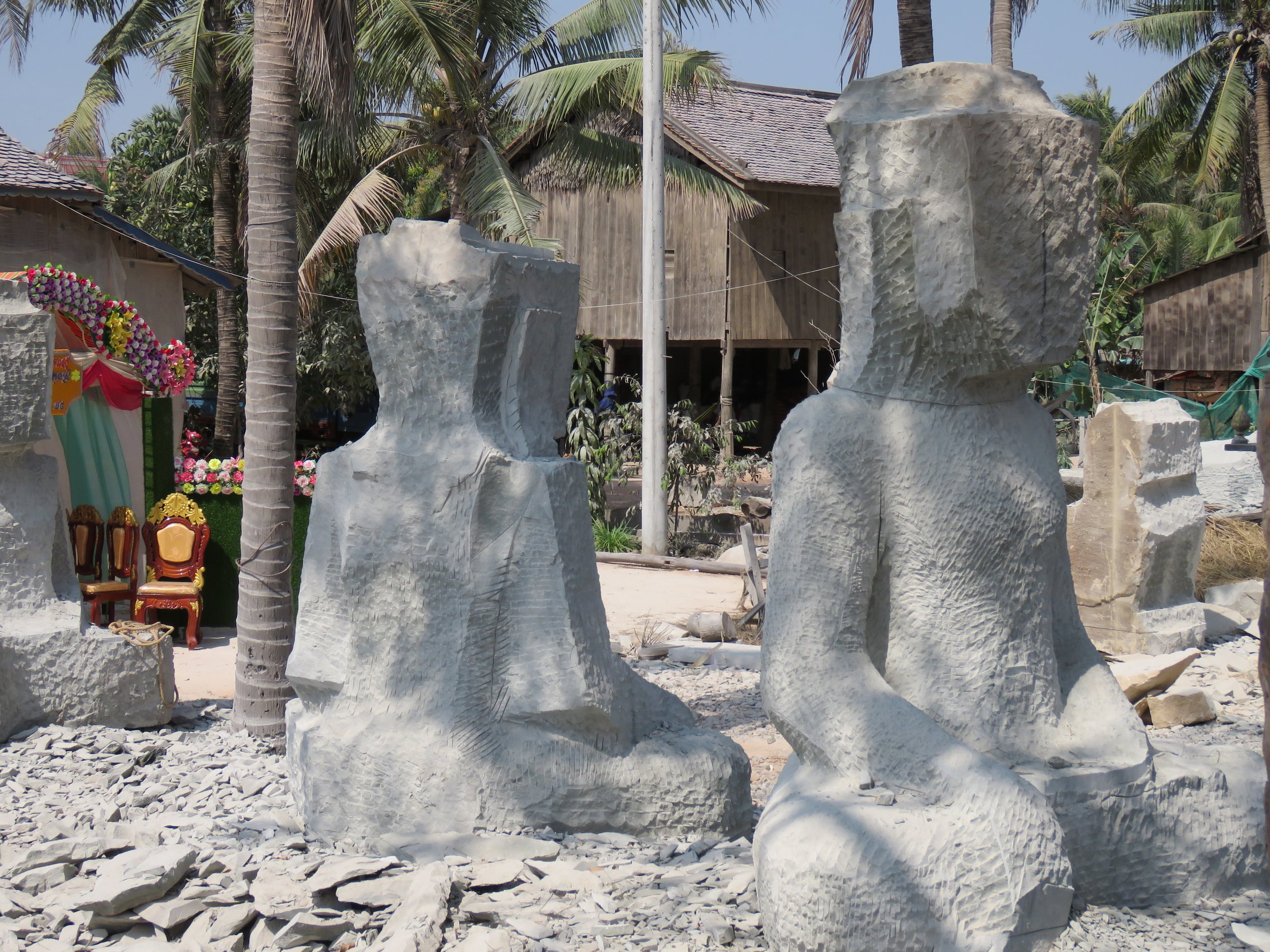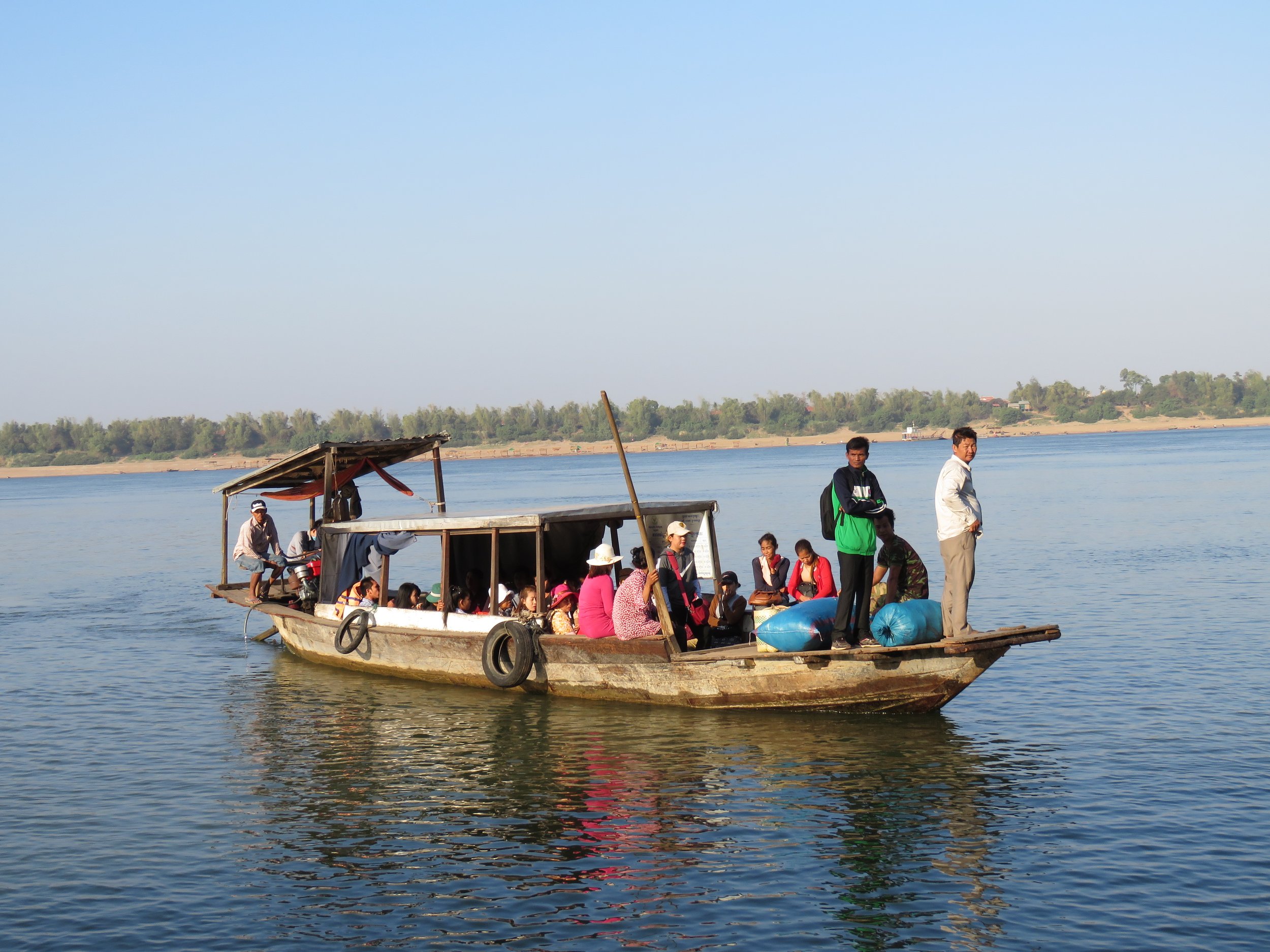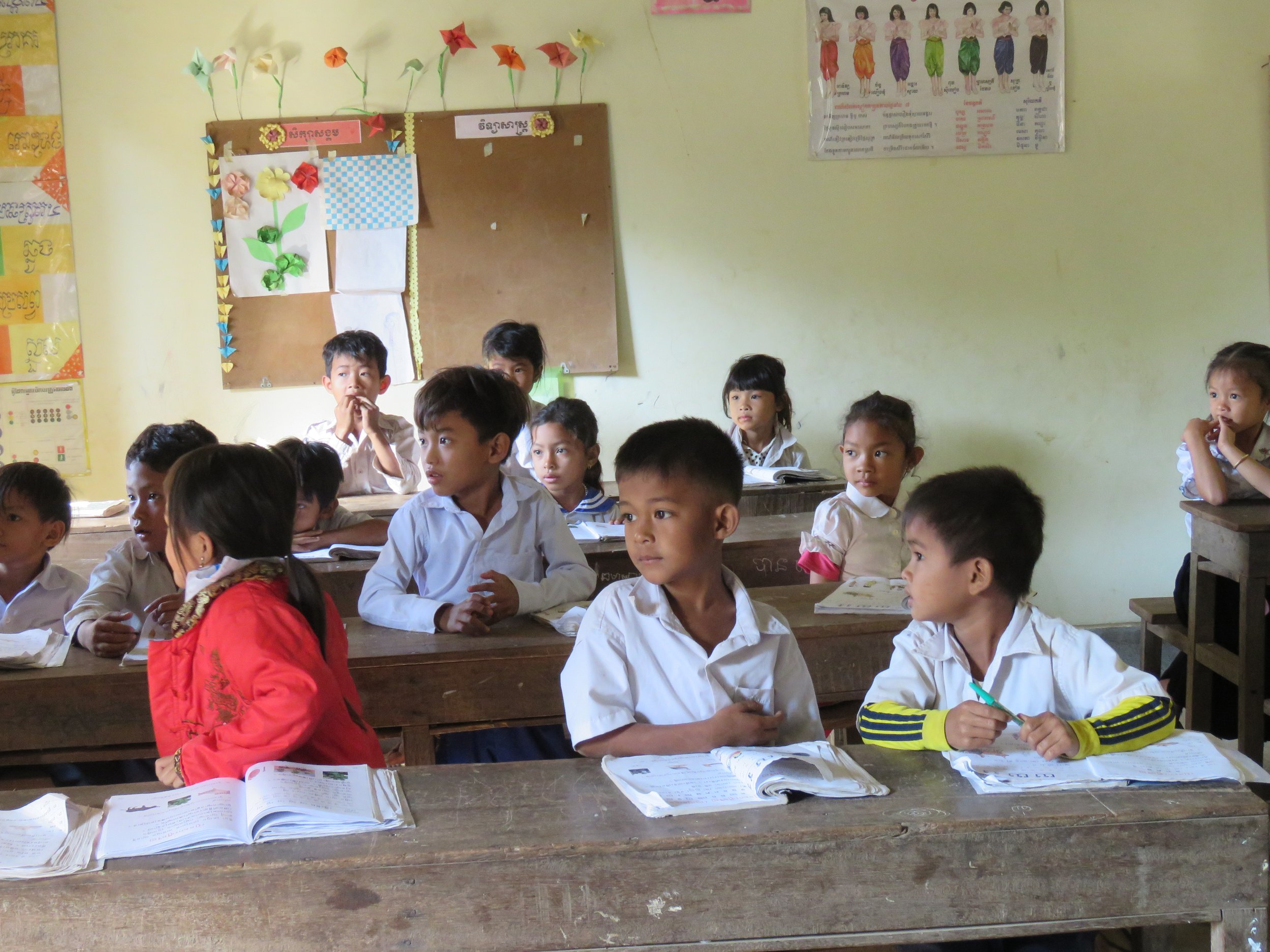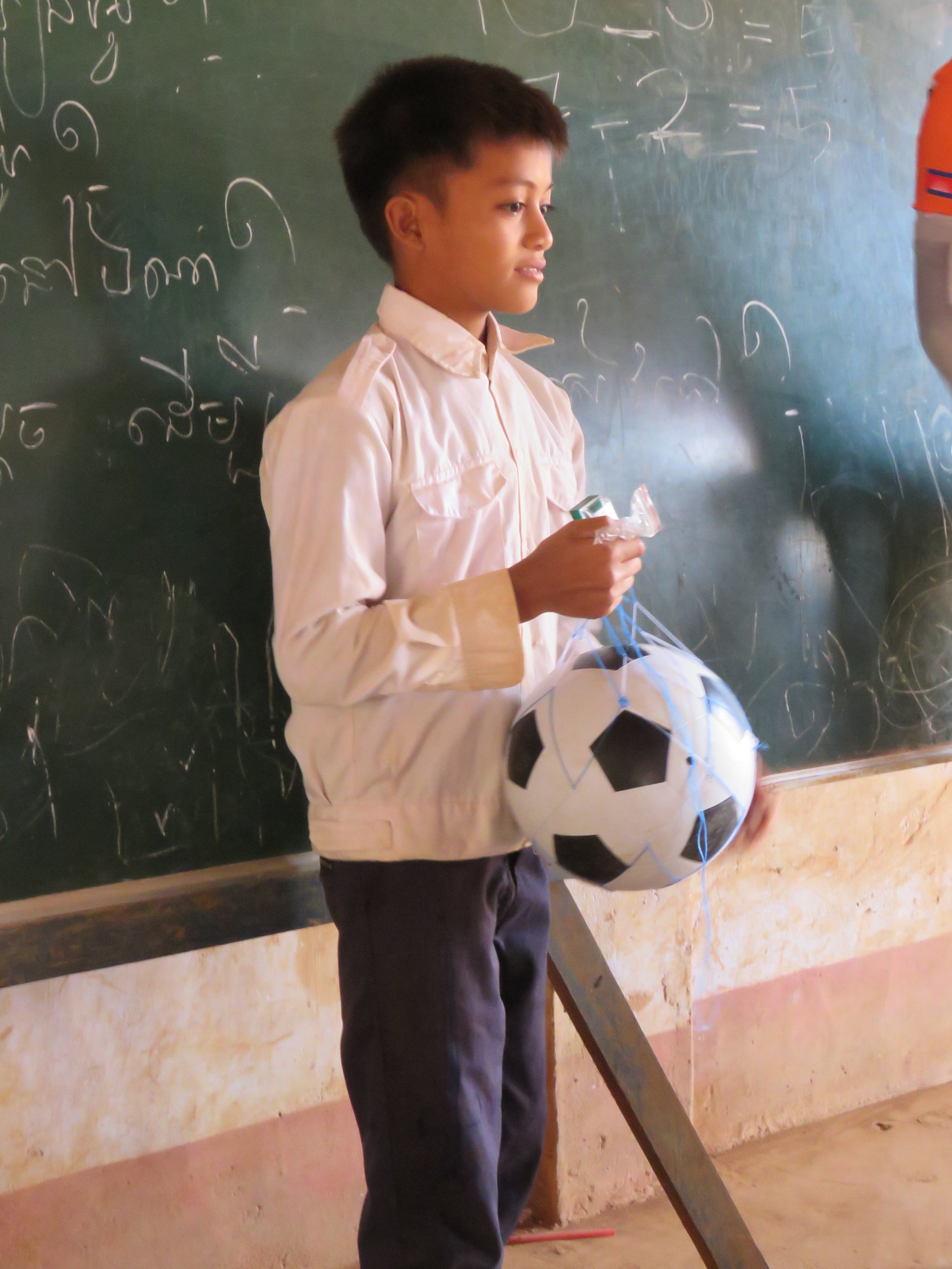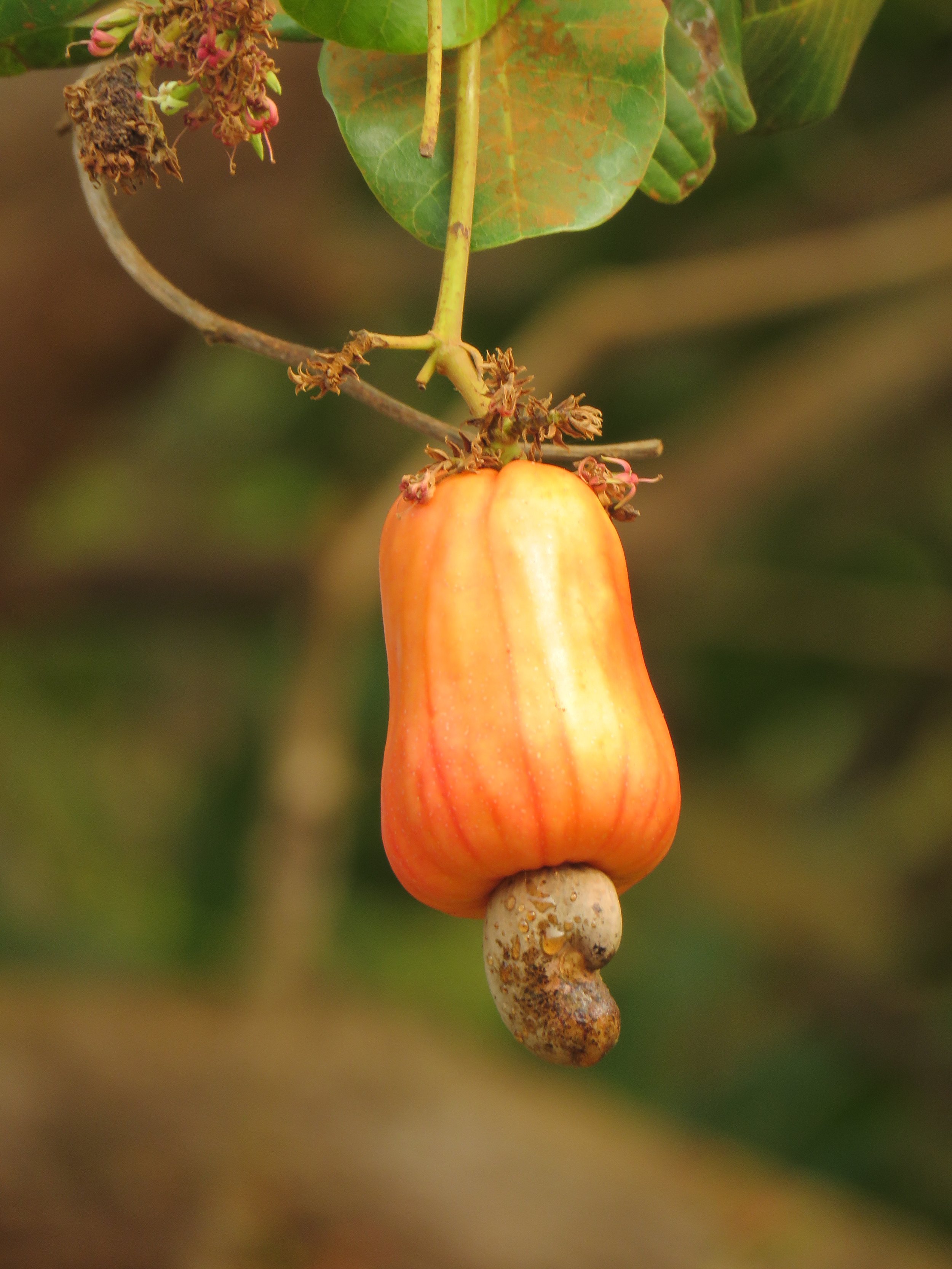During our visit to Cambodia, of course we went to Angkor Wat. Our time in Siem Riep and visiting Tonlé Sap, the largest lake in SE Asia, was amazing. We are also learning many fascinating things here.
Cambodia’s religion is mostly Buddhist but with its own strong blend of Hinduism. Cambodians seem to celebrate everything: Chinese New Year, their own and a few others… Smart. This country needs all the celebrating it can get.
Poleak
Your birth sign is very important. For instance if you were born in the year of the rabbit you might not be able to marry a girl who was born under the ‘wrong’ sign for you. Our guide, a wonderful, cheerful young man named Poleak, had to move heaven and earth and really talk his parents into letting him marry the girl he loved because he is “wood” and she is “fire”.
Couples born in a certain year can also not have a baby in a year that is not ‘good’ for them. So they are told to make sure not to have a baby that year. Children often get a ceramic piggy bank in the shape of their sign: a pig (not hard!), a rabbit, etc. Our guide was very excited to find out that I am a ‘dragon’ - apparently the most desirable sign to be born under.
School bus…
Family is very important in Cambodia. A young man does not really want to date a girl who lives in a far-away city because neither of them would be able to move away from their parents and grandparents.
Families here tend to be larger, with 6 or 7 children. Some birth control is being taught. My favourite story is of medical volunteers explaining birth control in a small, northern village. They demonstrated the use of a condom by putting it on a butternut squash, just the right shape. Something was lost in translation when one young couple went home, bought a butternut squash, put a condom on it and kept it in their home while having sex. They were most upset to get pregnant despite their precautions….
We were happy to attend an evening of traditional dance. Cambodia Cycling, the company that organized our tour, arranged this for us. They drove us to a restaurant in Siem Reap where we were served a very good traditional dinner while watching the impressive dancers in traditional costumes. One dance was called the Peacock Dance and both dancers had enormous peacock tails. My favorite was the coconut dance, with coconut shells used like Spanish castagnettes. The girls have long fingers that can bend backwards. Each hand gesture is an integral part of the dance and has many meanings. They stretch their hands for many years to achieve these unusual positions. The dances, like the sculptures and statues in the temples, tell stories of the past and of the beliefs.
The women on the street wear either western clothes or sarongs and t-shirts. The most common Cambodian wear is a pant suit that totally resembles our pajamas. You know those old-fashioned flannel pajamas of pants and a button-down jacket? That’s what most women wear in bright, busy patterns. I hope that they are not flannel - I think it is synthetic, silky material.
We’re told that robes of monks are bright orange because this is the natural color of leaves on a tree, in the best part of their lives. Not light green when they start growing, not withered away brown but bright orange. A lovely thought.
A spirit house and a satellite dish.
Most people here have a spirit house in front of their home - a small kind of temple on a stand. In it they burn incense and leave offering to please their house spirit - drinks, fruit, etc. Some houses have several. If a business man is successful, he buys more elaborate, larger spirit houses or statues.
When I walk here, with my western preconceptions, I am appalled by the poverty everywhere. Kids run barefoot through the village. They have nothing - no toys, perhaps a rusty old bike. We watched two little girls play doll using empty cola bottles.
We travel with cabin luggage only and I swear that we carried more with us in one bag then most of these people own.
But what is poverty? When is a person ‘poor’? They grow their own food. They have rice and chickens, pick mangoes and drink coconut juice or sugar cane juice so their bellies are full. Education is free so the kids go to school. Education means a better future. And they are so happy. Everyone smiles, everyone is cheerful - which more than I can say of many in western countries.
In a country with 31º average temperature, 95% of the population does not have a refrigerator. There simply is no electricity. People use ice boxes and buy large chunks of ice each day. So someone has the job of icemaker and hauls these blocks on his wagon, wrapped in tarps to deliver to roadside stands and other customers.
Buddhas in progress
It is so interesting to see how people carve a living out of their surroundings. As we drove north from Siem Reap to Kratie, some 400 KM, we stopped along a short stretch of road with nothing but stone carvings for sale. A young man was hammering away at one of the giant blocks, turning them into buddhas.
I lose track of how many temples we have visited but all of them have an abundance of stone statues, mostly grey stone but sometimes painted. Often long staircases are lined with figures carrying an enormously long rope or snake. On one side are evil, or mad looking persons, on the other are smiling, good people. Someone has to produce all of these statues.
Many thousands work in the garment industry, Cambodia’s major source of income. A factory worker - often women - earns about $150 per month. That’s for 9 hour days, 5 or 6 days a week (comes to about 80 cents per hour!!). Yet everyone has a cell phone in their hands. Even in villages with almost no electricity, people have cell phones. A plan is 5.- per month.
As we were driving a very bumpy dirt road, I was just thinking what a poor area this must be, with shacks, uneven planks for walls, rusty tin for roofs. Then our guide said “This is a well-to-do area with larger homes. Tomorrow we will be in a much poorer area…”
Kratie is a bustling city on the Mekong river. From here we crossed that mighty river in a small wooden boat used by locals as the ferry to Koh Trong, an island in the river. With us on the ferry were school teachers and workers bringing supplies. One man brought large ice blocks to sell, others carried big bags of produce.
Arriving on the other side, we first walked about 400 meters over soft white sand which, in rainy season, is well under water.
Then we walked over to the Primary School of Koh Trong. Within minutes we were in the first grade and I was given a piece of chalk and told to write the English alphabet on the blackboard. The kids all chanted sounds and many knew the “alphabet song”.
Education is incredibly important here. It is free for all but kids need a school uniform (blue or black pants or skirt and white shirt). Teachers used to make a pittance and have to have a second job in order to be able to afford teaching. Now it is getting better, we’re told. Kids learn English in the higher grades. They sang songs for us and we left them lots of pencils, pencil sharpeners and a soccer ball.
We strolled along one side of the long, narrow island, up around the tip and back along the other side through rice paddies. We were passed by lots of motorbikes, bicycles and oxen carts. We stopped in one yard to eat a pomelo, and got to use the squat toilet at another. Many people sat in the shade under their homes. Some swept the yard with a bunch of twigs. One had a chair outside and a mirror hanging in the tree with a sign ‘Haircuts one dollar’.
Language fun: Every night at dinner we get asked “Would you like rye with that?” It’s not a drink but ‘rice’ without the ’s’ sound.
The clerk at the hotel does pronounce the ’s’ even if it is supposed to be silent. As in “You are going to Iceland today.”
Do you know what this is? (answer at the end of this story)
Me: “Iceland?!”
“Yes, Koh Trong is Iceland,”
Me: “Ah! Island! Yes.”
Things we learned the hard way:
Bring medications. Getting food poisoning on day three of our 15 day trek, was no fun. I still don’t know for sure what caused it. Local food can be very good but is also made with local water. Be sure to never drink from the tap, even in luxurious hotel. I even switched to using bottled water for brushing teeth. We brought things like Tums and gravol. I used them all. Anti-Diarrhea pills are better to bring rather than have to buy them abroad.
In Cambodia, going to remote areas, we had to take malaria pills. But instead of using official malaria pills at 10.- a pop for about 40 days, we were able to take Doxylin, a mild antibiotic which was less than half the cost.
• We did not realize before we went, that money dispensed from local ATMs is in US dollars! We had assumed we’d be paying in riels, even though US $ are readily accepted. But basically everything is in US dollars, all posted prices. Just when you pay cash, you get the small change back in riels.
Bring a (quick dry) towel. Several times we stopped for a swim and needed a towel. I was also glad to have one when washing up in a village.
Toilet paper! Most public toilets, even in restaurants, do not have toilet paper. Bring your own!
You might want to check with your tour planner about meals. We really like to chose our own food. But sometimes we were confronted with a set menu. That can result in the same fish dish three days in a row until we asked to select our own dishes.
Bring gifts. Any guide will appreciate a small gift from your home country. But especially if you visit local schools, you will want to leave some meaningful things behind. We brought a large pile of simple, English picturebooks, lots and lots of pencils with pencil sharpeners and lots of stickers. We also bought, at a local market, some soccer balls to bring to poor, remote schools where a soccer ball will be hugely popular with the kids. We left good clothing and shoes with our homestay family at the end of our trip. I brought clothes for the entire trip that I could discard. This cut down on laundry but also made it possible to leave good clothes behind with families who could really use it.
RESOURCES:
We booked our entire trip through: http://cambodiacycling.com
Best guide: in Cambodia, for hiking, cycling, mopeds and more: https://www.facebook.com/poleakchhet
Answer: This is how a cashew nut grows!
